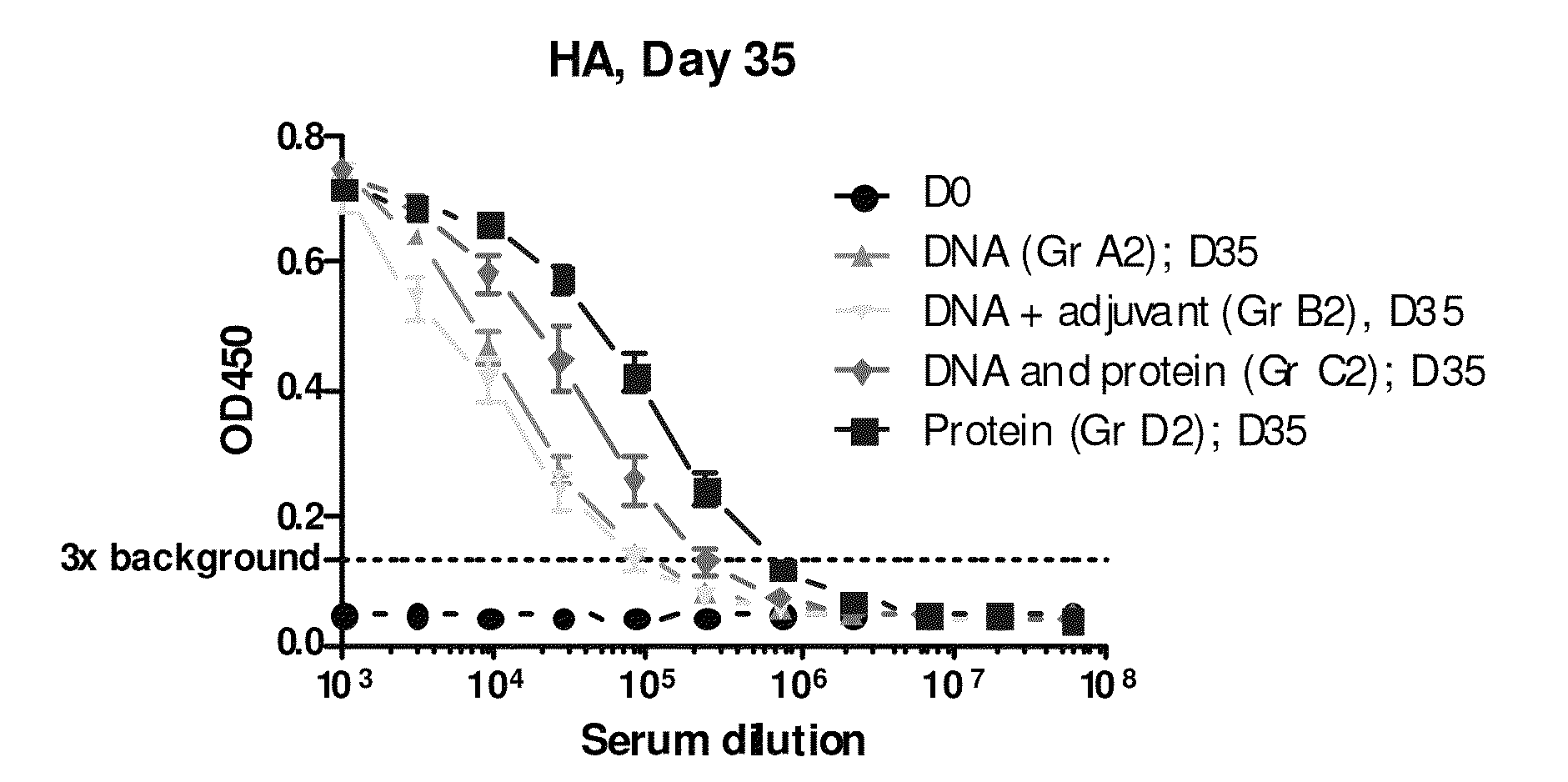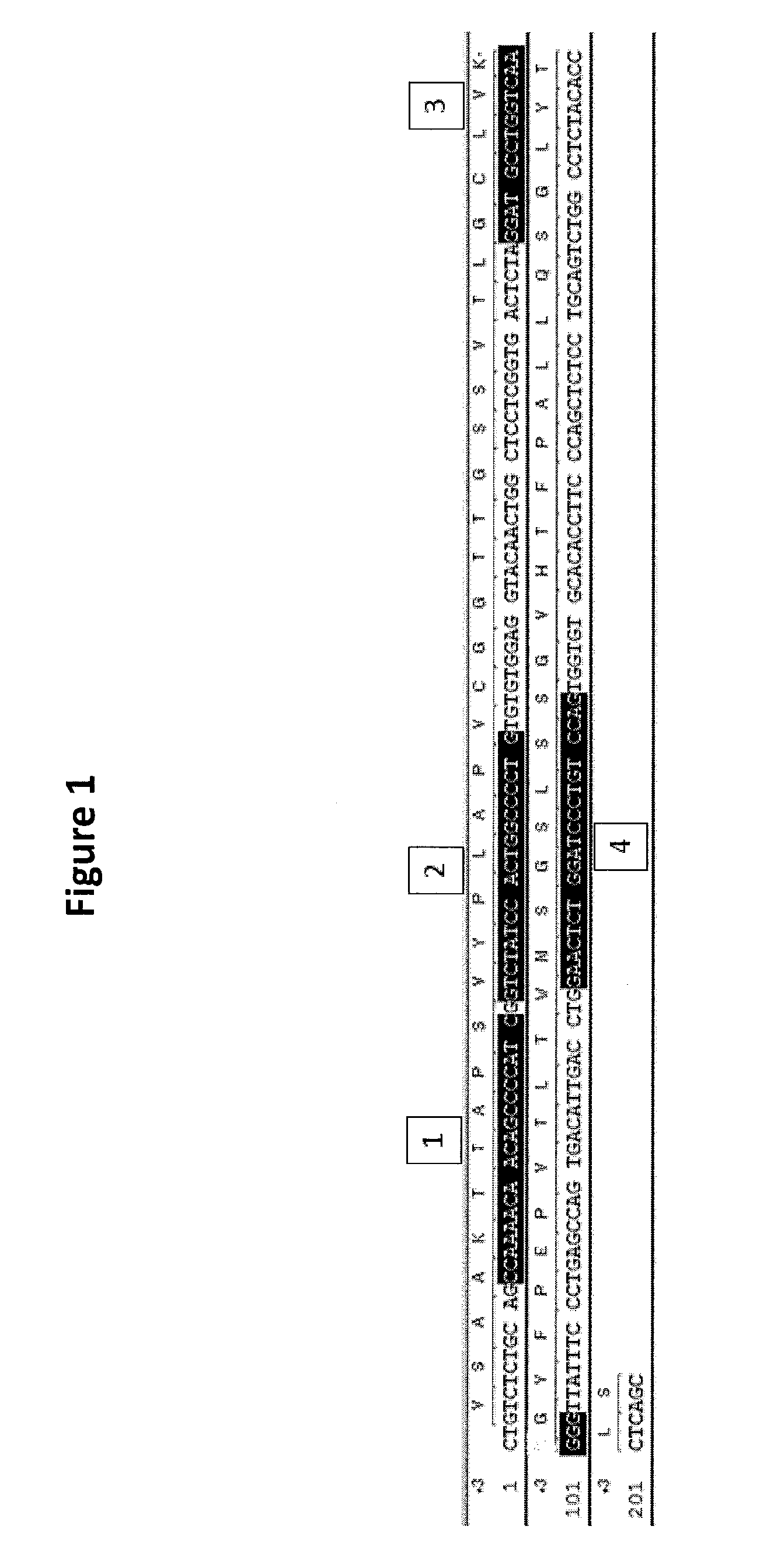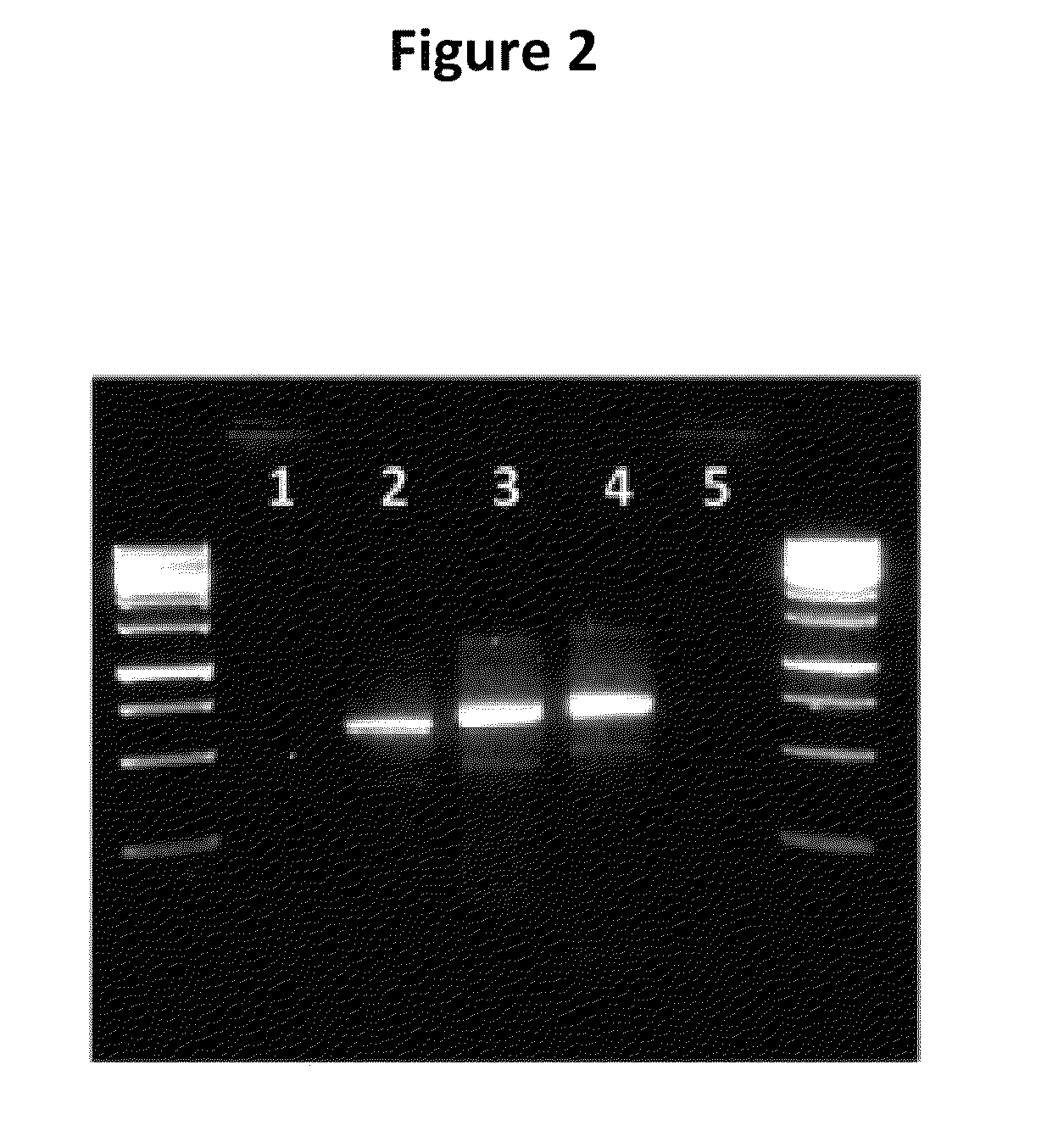Generation of binding molecules
a technology of binding molecules and molecules, applied in the field of binding molecules, can solve the problems of reducing the pharmacological efficacy of xenogeneic monoclonal antibodies, limiting the use of human disease therapy, and not being suitable for efficient interrogation of the whole repertoire of specific antibodies, so as to facilitate immunization, facilitate screening of antibody repertoires, and efficient and comprehensive interrogation
- Summary
- Abstract
- Description
- Claims
- Application Information
AI Technical Summary
Benefits of technology
Problems solved by technology
Method used
Image
Examples
example 1
Deep Sequence Analysis and Frequency Ranking of VH Genes Expressed in Murine Spleen B Cells Using VH Family-Specific Primers
[0050]This example describes the use of high throughput sequencing to retrieve and analyze the repertoire of antibody VH regions expressed in the spleen of wild type mice immunized with the antigens ErbB2 or ErbB3. Because immunization will enrich the B cell population for clones directed against the immunogen, it is anticipated that sequencing large numbers of VH transcripts identifies these B cell clones as they will be present within the population in higher frequencies. In this example, approximately 25,000 VH region genes from the spleen of a single immunized mouse are retrieved by high throughput sequencing and ranked based on frequency.
[0051]Spleens were collected from mice immunized with either the antigen ErbB2 or ErbB3 using DNA tattooing (see example 6). A single cell suspension was prepared according to standard techniques. B cells were isolated fro...
example 2
Deep Sequence Analysis and Frequency Ranking of VH Genes Expressed in Murine IgG+ Spleen B Cells Using a Single Primer Set
[0070]In this example, a primer specific for the IgG CH1 constant region was used to interrogate the repertoire of VH gene sequences expressed in IgG+ memory B cells in the spleen of mice immunized with the ErbB2-Fc fusion protein. At the 5′ end of the mRNA an oligonucleotide primer was annealed to a triple guanine stretch that was added to each mRNA by an MMLV reverse transcriptase. This 5′ primer introduces a priming site at the 5′end of all cDNAs. Using this approach, amplifications of all VH regions expressed in IgG+ B cells can be done using the 5′ primer and the CH1 primer, preventing a potential bias introduced by the use of a large number of VH family-specific primers and focusing the analysis on a population of B cells that has apparently undergone activation and isotype switching as a result of stimulation with antigen.
[0071]Wild-type C57BL / 6 mice were ...
example 3
Deep Sequence Analysis and Frequency Ranking of VH Genes Expressed in Murine IgG+ Spleen B Cells without VH Family Specific Primers
[0078]For this example, the objective was to optimize deep sequencing technology of IgG VH genes by using amplifications based on primers that amplify all Ig heavy chains and thus to prevent potential bias introduced by VH family specific primers.
[0079]Antibody VH gene amplification for phage display library generation uses primers that append restriction sites for cloning to VH genes at the required position within the genes. This requires primer annealing sites within the VH genes and therefore VH family specific primers. In example 1 such primer sequences were used. A downside of the use of VH family primers is that they amplify a subset of all VH genes in the repertoire. As a large collection of primers and PCR reactions is used to amplify all genes and the PCR products are mixed afterwards, this will result in skewing of the ratios of the VH genes o...
PUM
| Property | Measurement | Unit |
|---|---|---|
| concentration | aaaaa | aaaaa |
| concentrations | aaaaa | aaaaa |
| concentrations | aaaaa | aaaaa |
Abstract
Description
Claims
Application Information
 Login to View More
Login to View More - R&D
- Intellectual Property
- Life Sciences
- Materials
- Tech Scout
- Unparalleled Data Quality
- Higher Quality Content
- 60% Fewer Hallucinations
Browse by: Latest US Patents, China's latest patents, Technical Efficacy Thesaurus, Application Domain, Technology Topic, Popular Technical Reports.
© 2025 PatSnap. All rights reserved.Legal|Privacy policy|Modern Slavery Act Transparency Statement|Sitemap|About US| Contact US: help@patsnap.com



